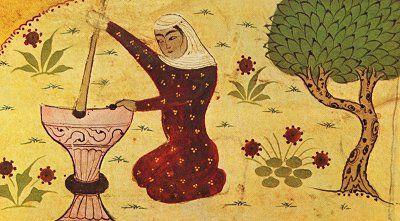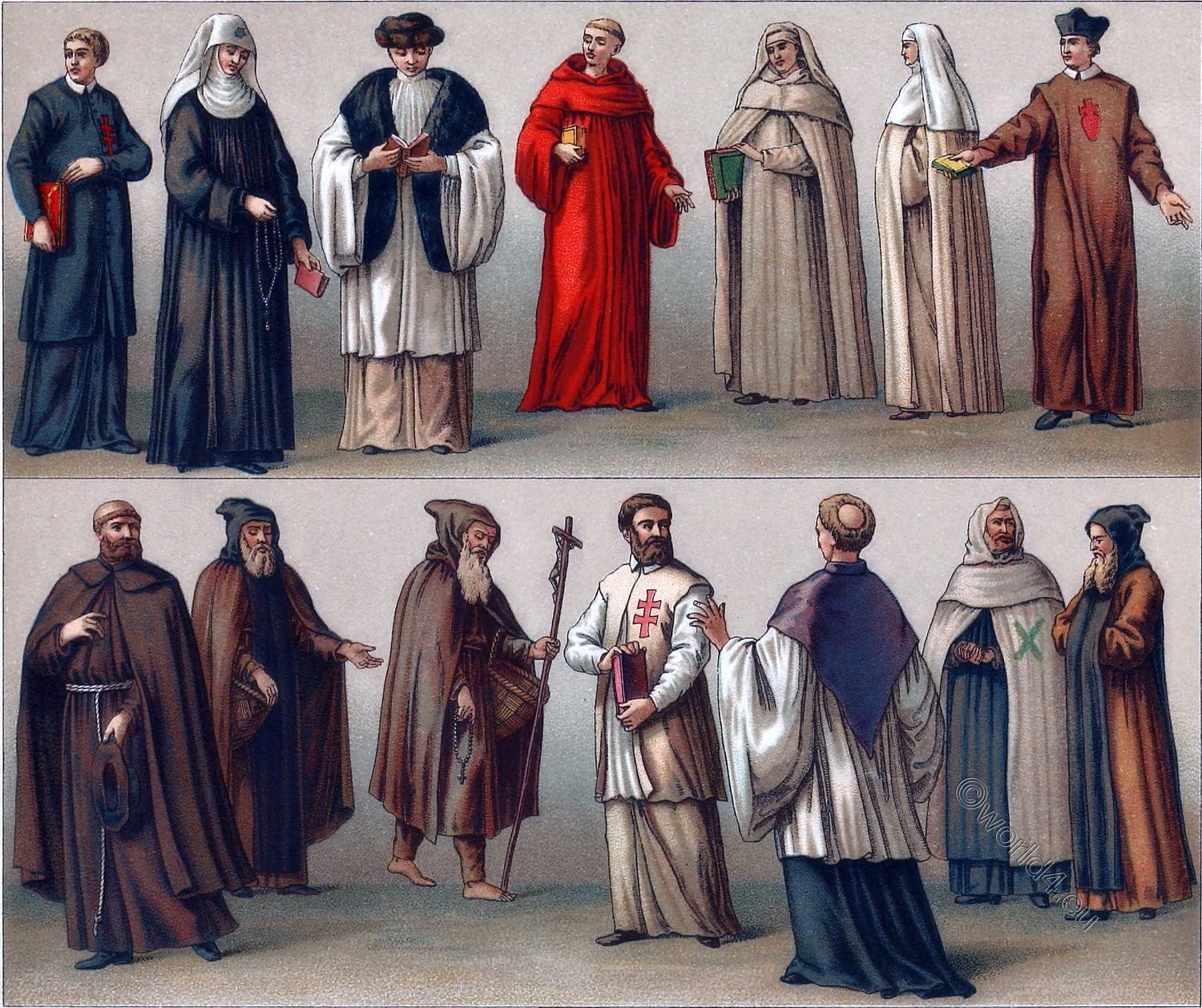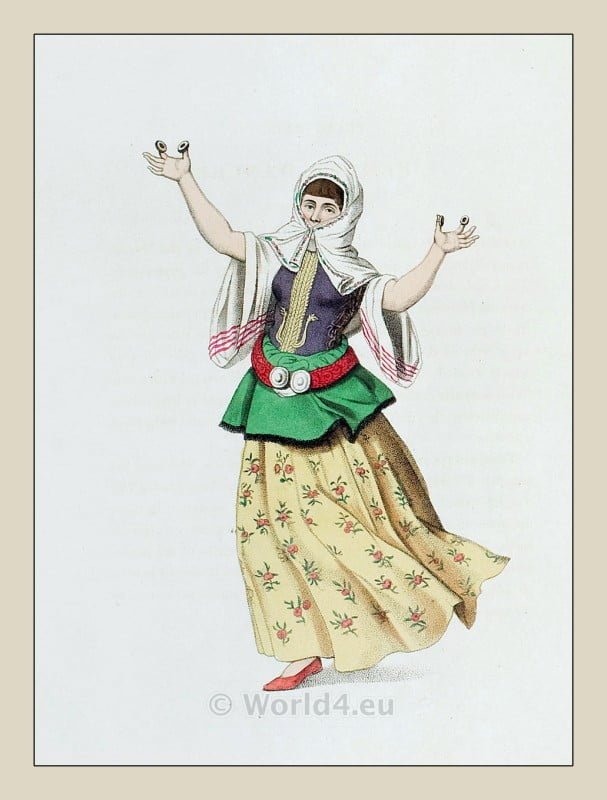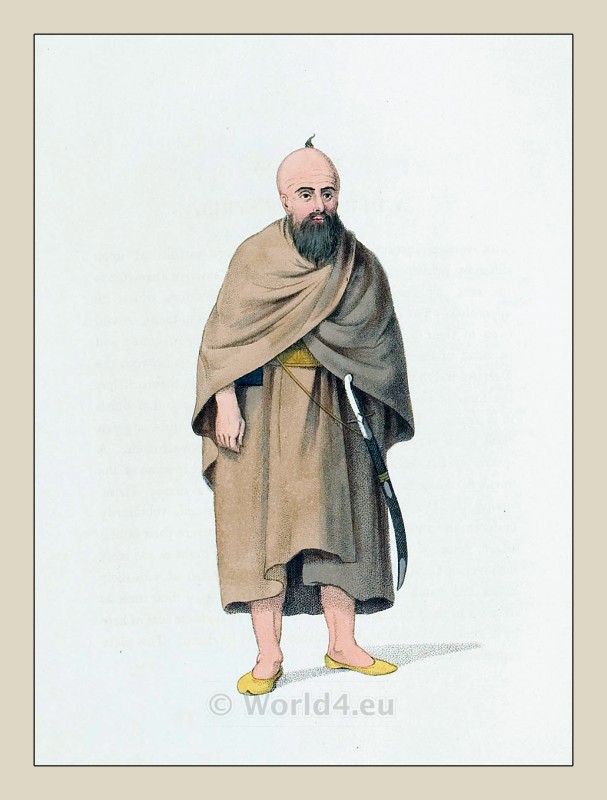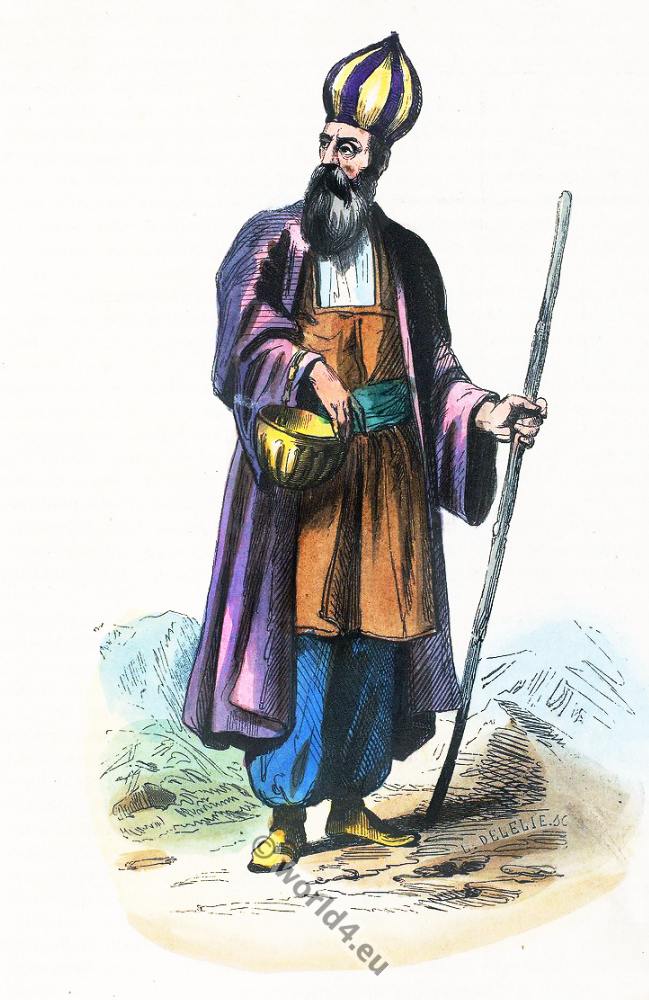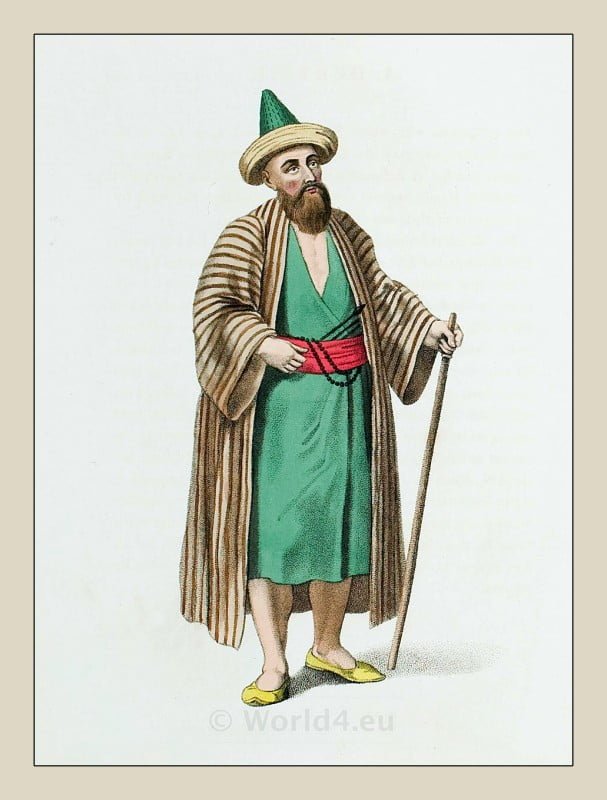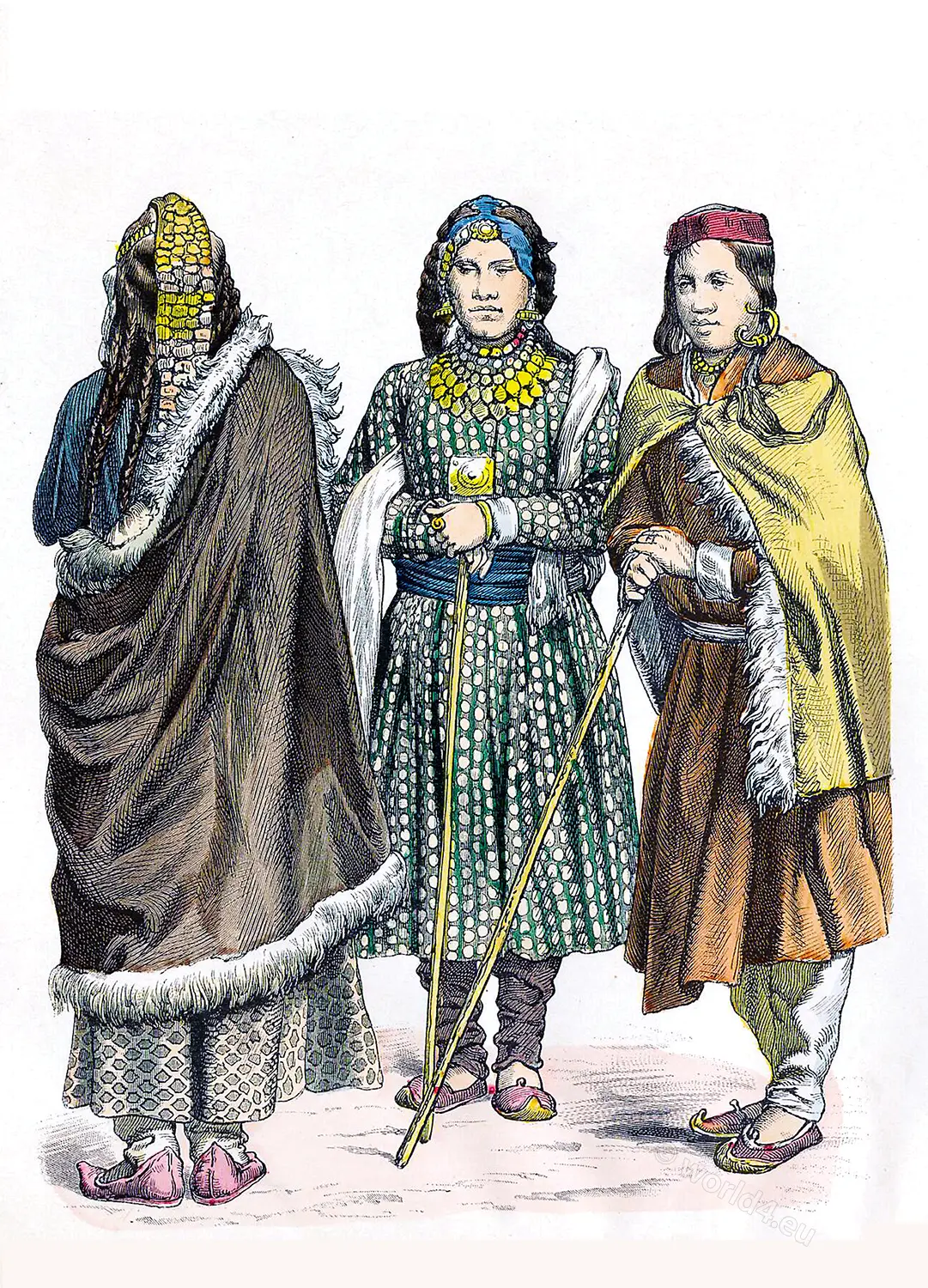WOMEN MYSTICS
by Lucy Mary Jane Garnett.
"Her Woman's sex dims not the Sun's effulgent ray; Though Masculine the Moon, he lighteth not the day." 1) From the Arabic.
IT is characteristic of the high estimation in which women have always been held by the Sufis that the place of honor among the early mystics is by them assigned to a woman. This distinguished person was Rābia al Adawia (Rābiʿa al-ʿAdawiyya al-Qaisiyya 718-801), also called Umm al Khair (“The Mother of Good,”) a native of Bássora (Basra, Iraq), who lived in the eighth century, and whose reputed grave on Mount Tor, to the east of Jerusalem, became, like those of the generality of Moslem saints, a place of pilgrimage.
The words and actions of this Queen of Mystics have been recorded by many Oriental writers; 2) and contain a germ of Sufism, or kind of sentimental pantheism, which often found poetical or rhythmic expression. An eminent Sufi writer of the twelfth century, Ibn Khamis Al Juhani, relates in his works many anecdotes of Rābia’s sanctity and piety, some of which are quoted by Ibn Khallikan in his Biographical Dictionary. The following verse is attributed to her :-
My heart I keep for Thy communion, Lord!
And those who seek me but my body find.
My guests may with my body converse hold,
But my Belov'd alone holds converse with my heart.
1) In Arabic, as in German, the Moon is masculine and the Sun feminine.
2) M. Dozy, however, attaches no historical value to the legends concerning Rābia. Essai, etc., p. 318-19.
It is related that on one occasion the celebrated Moslem theologians, Hassan of Bássora and Shākik of Balk, came to visit this pious lady when she was ill. The former greeted her in mystic fashion with the following couplet:-
He in his faith cannot be all sincere,
Who mourns the chastening of his Master dear.
Shākik added, correcting his friend:-
He in his faith cannot be all sincere,
Who joys not, chastened by his Master dear.
Rābia’s enthusiasm, however, went beyond that of her eminent and reverend guests, and she replied:-
He in his faith cannot be all sincere,
Who feels a smart when draws his Master near!
Another eminent contemporary theologian, Sofyan ath Thauri (Sufyān ibn Sa’īd ibn Masrūq Abū ‘Abd Allāh al-Kūfī 715-778 Basra, Iraq), exclaimed one day in her presence, “O what anguish is mine!” Rābia reproved him, saying, “Speak not a lie, but rather say, ‘O how little anguish is mine!” If thou wert really in affliction thou couldst not sigh.”
One of the Sufi brethren relates that in his prayers he was accustomed to invoke Rābia, who appeared to him in a vision, and said: “Thy offerings were presented to us on trays of light, and covered with napkins of light.” She often said, “If my good works appear to the world, I count them as nought,” and one of her counsels was: “Hide thy good deeds as thou wouldst hide thy sins.” One of her biographers gives a story as related by Abda, a handmaid of this pious lady: “Rābia used to pass the whole night in prayer, and at morning dawn she took a short sleep in her oratory till daylight; and I have heard her exclaim, springing from her couch as if in dread: ‘O my soul! how long wilt thou sleep? When wilt thou awake? Soon thou shalt sleep to rise no more till the call shall summon thee on the Day of Resurrection!’ This was her constant custom till the day of her death.
On its approach, she called me and said, ‘O Abda! inform none of my death, and shroud me in this gown.’ This was a gown of hair-doth which she wore when praying at the time when the eyes of others were closed in sleep. I shrouded her in that gown and in a woolen veil which she used to wear; and about a year afterwards I saw her in a dream, clothed in a gown and veil of green silk, the like of which for beauty I never beheld. And I said, ‘O Rābia! what has become of the gown in which I shrouded thee, and of the woolen veil?’ To which she answered, ‘By Allah! it was taken off me, and I received in exchange what thou seest on me; my shroud was folded up, a seal was put upon it, and it was taken up to the highest heaven, that by it my reward might be complete on the day of resurrection.’ ‘It was for this,’ I observed, ‘that thou didst work when in the world.’ ‘And what is this,’ she rejoined, ‘compared with what I have seen of Allah’s bounty to his Saints?’ I asked her in what state was Obaida (a holy woman who had predeceased her), and she replied, ‘It cannot be described. By Allah! She has surpassed us all, and reached the highest place in Paradise.’ ‘And how is that,’ said I, ‘when all men considered thee far, far above her?’ ‘Because,’ she replied, ‘when in the world she took no thought for the morrow, nor even for the coming night.'”
In the Acts of the Adepts, and elsewhere, we also find records of many holy women, some of whom were honored with the friendship of the poet saint Jelālū-‘d-Dīn; and not least eminent among them were his wife, Kīrā Khātŭn, and his daughterin-law, Fatima. The latter had been taught to read and write by Jelāl, who bestowed upon her the complimentary title of his ” Right Eye”; her sister he called his “Left Eye”; and their mother, Lātifā Khātŭn, “the Personification of God’s grace.” “Fatima,” says the story, “was a Saint, and continually worked miracles. She fasted by day, and watched by night, tasting food only once in three days. She was very charitable to the poor, the orphans, and the widows, distributing to them food and raiment.”
Kira Khatun was also a most saintly woman who was attributed as ‘God’s saint on the earth,’ or ‘second Maria’ (Kira Khatun was of Christian background). She was Mawlana Jalal al-Din Rumi’s second wife, and survived him. When she, too, departed this life, and was about to be buried by the side of her husband, a strange incident occurred. As her corpse was being borne towards its last resting-place, the procession passed through one of the gates of the town (Konya). Here the bearers found themselves arrested by some unseen power, so that they could not move hand or foot. This singular effect lasted for about half an hour. Her stepson, Sultan Veled, struck up a hymn and commenced a holy dance, after which the bearers recovered the use of their limbs and the interment was completed. That same night a holy man of the fraternity saw Kira Khātŭn in heaven by the side of her husband, and enquired of her the reason of the arrestation of the funeral. She informed him thus:-
“On the previous day a man and a woman had on that spot, been stoned to death for adultery. I took compassion on them, interceded for their forgiveness, and obtained for them admission to Paradise. My preoccupation on their behalf was the reason of the delay met with by the funeral procession.” *)
According to Eflāki, there lived at Konya in the days of Jalal al-Din, a saintly lady named Fakhr-un-Nisa (1091-1179, in Arabic means “The Glory of Women”), who enjoyed the acquaintance of the holy men of the time, all of whom were aware of her sanctity. Miracles were wrought by her in countless numbers.
*) The Mesnevi, p. 119. This curious legend appears to illustrate the Moslem notion that the soul remains with the body until after burial, and that it is only then-except, perhaps, in the case of such saintly persons as Kira Khatun -that its ultimate destiny is decided. After the last rites have been performed by the relatives, the Imam is left alone by the grave in order, it is said, to prompt the deceased in his replies to the “Questioners.” These are the two Angels, Mounkir and Nekir, who, according to Moslem belief, enter the grave with the dead in order to interrogate them concerning their faith. If the dead has been a devout Moslem, his reply will be “My God is Allah; my Prophet, Mohammed; my religion, Islam; and my Kibla, the Ka’aba.” If, however, he has been but an indifferent follower of the Prophet, he will not be able to remember this formula.
She constantly attended the meetings at Jelal’s house and received occasionally visits from him. Her friends suggested that she ought to go and perform the pilgrimage to Mekka; but she would not decide upon so serious an undertaking without first consulting Jelal. Accordingly, she went to see him. As she entered his presence, before she spoke, he called out to her: “Oh most happy idea! May thy journey be prosperous! God willing, we shall be together.” She bowed, but said nothing. The disciples present were puzzled. “That night she remained a guest at Jelal’s house, conversing with him till past midnight, when, according to his custom, he went to perform his devotions on the housetop. Presently he called to her to come up also, and when she did so, she saw the holy Ka’aba of Mekka revolving in the air above the head of Jelal. So overcome was Fakhr-un-Nisa by this wondrous sight, that she sank down in a swoon. On recovering she came to the conclusion that it was not necessary for her to undertake the difficult and dangerous journey to the Holy City, as its chief attraction had been thus marvelously revealed to her.”
In later centuries also it would appear that Societies of pious women have been from time to time affiliated with the Dervish Orders. These holy women are frequently mentioned in the biographies of Dervish Saints, either individually, or collectively by some such name as “The Sisters of Rūm,” alluded to in the writings of Haji Bektash Veli or Haji Bektash Wali (1209 – 1271). Nor is such mystical devotion entirely unknown among Osmanli women at the present day.
The widow of the Cavalla Sheikh above referred to, a woman of great intelligence, presided, after her husband’s death, over a society of female devotees who held their meetings at her residence. A British subject who had had business relations with the Sheikh in connection with the tobacco-growing industry of Cavalla and the neighborhood, from which the revenues of the Tekkeh were derived, obtained from this lady many curious details concerning her Sisterhood, and was even allowed by her to be a hidden spectator of their devotions.
During the first years of my residence at Salonica I chanced to come into contact with a Turkish lady who was always referred to as “the Dervish Hanŭm,” and enjoyed the reputation of being no mean poetess. Though sufficiently liberal minded to admit European ladies to her acquaintance and visit them in their own houses, she, however, always skillfully parried any attempt to elicit information with respect to the Sisterhood of Mystics of which report proclaimed her to be a distinguished member.
In the earlier times of Islam much greater freedom of manners appears to have existed than has been the case in later centuries. Indeed the records of the Prophet’s commands on the subject of the seclusion of women, and the glimpses we have in the Koran and in the writings of the Commentators of the social life of his time, do not point to any greater “subjection of women” than that enjoined by the Apostle Paul; and the women of the Prophet’s household evidently held a much higher position, and were treated with far more respect than are the women of a provincial Armenian family at the present day.
The Turkish harem system, though less rigid than is generally believed in Europe, naturally offers great obstacles to the formation of sisterhoods. And the natural result of denying to women any social intercourse with the other sex has been to stifle any desire for even that moderate amount of education necessary to enable them to read and appreciate the spiritual writings by which their husbands and brothers are influenced. For though it is naturally the more ignorant among Moslem women who believe most implicitly in the wonderworking powers of Dervish Sheikhs, it is on the other hand only women who have received a good Turkish education who rl enter on the Mystic Path,” and are distinguished by the title of Sūfi Hanŭm.
Source: Mysticism and magic in Turkey; an account of the religious doctrines, monastic organisation, and ecstatic powers of the dervish orders by Lucy Mary Jane Garnett. New York, C. Scribner’s Sons, 1912.
Continuing
Discover more from World4 Costume Culture History
Subscribe to get the latest posts sent to your email.

